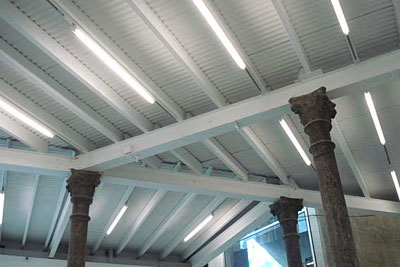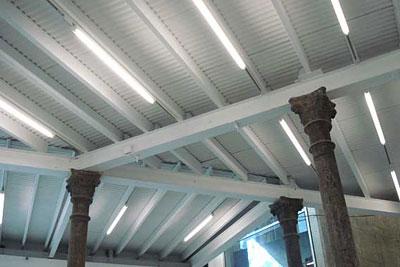I recently wrote about a visit I made to Proa, a contemporary art space in Buenos Aires, and included images of the striking ceiling. As you can see in this photo, there's quite a contrast between the old pillars in the building and the very modern feeling fluorescent lighting.

A reader wondered if American museums will ever try lighting contemporary art this way. There are many ways to address this question and one, for starters, is to explore when and why fluorescents are used. I spoke with Terry Schaeffer in LACMA's Conservation Center on the subject and she told me that U.S. museums do indeed sometimes use fluorescent lights but that they're utilized less than tungsten, which is the mainstay, because fluorescents emit more UV light, which can be damaging to objects. The decision to light via fluorescent or tungsten is influenced by three primary factors: conservation requirements (works on paper and costume may be particularly light-sensitive), lighting that ensures a correct representation of the color of an object, and curator preference. Not surprisingly, contemporary curators are more inclined to choose fluorescent lighting, which lends a crisp, blue effect; and curators in fields that study art prior to the modern and contemporary periods most often prefer tungsten, which emits a warmer, cozier feel and evokes the experience of fire light.



